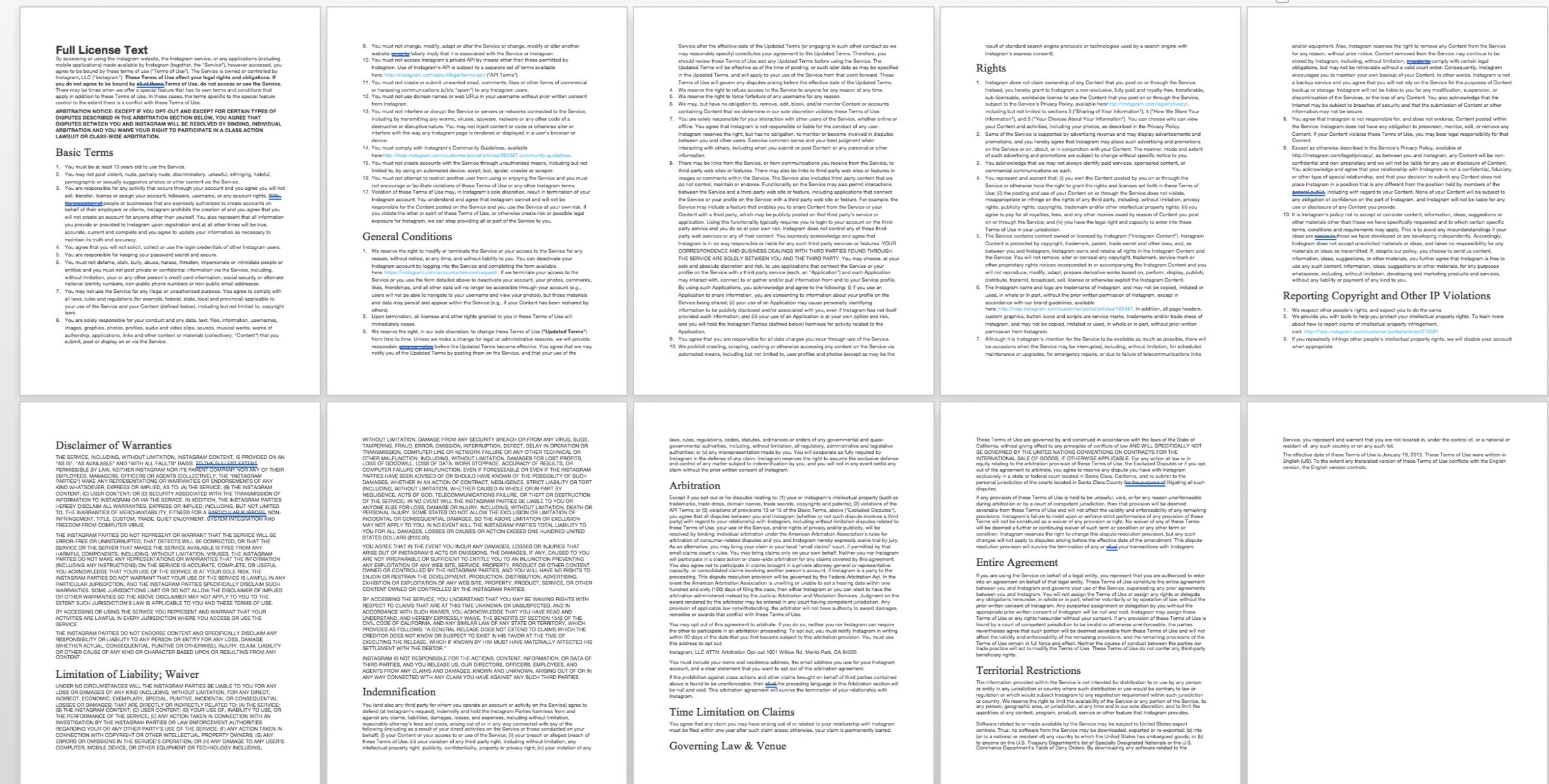Instagram’s
Terms & Conditions
Have you ever read any Terms & Conditions presented to you online? No, right? I guess you have always accepted because at the moment this document popped-up, you only wanted to start your product or service experience.
However, Terms & Conditions is an important document that contains and defines the rights you have and also, which are the obligations as a user. It’s a valuable information usually hidden in an illegible document.
We accepted this challenge to prototype T&C adapted to its public, to its brand and to restore its legal function which is to prevent conflicts.
*Made by Camila Andrade, Rebecca Yéyé, Dorra Harrar and Arnelle Lemoine as
“The French Team” for Legal Creatives© 1st Legal Design Challenge.
*Winner of the 2nd prize on the Legal Design Art Gallery 2020.
Starting point:
With 1.08 Billion Active Monthly Users, Instagram is the 3rd most used social network in the world and one of the most visual ones, very much used by artists, photographers, influencers and creatives in general.
The Terms & Conditions now consist of 17.161 words and it would take on average 60 minutes to read them in full. They appear at a starting point and you can easily skip it’s lecture by clicking on the acceptance button. You never see it again until Instagram “arbitrally” turns down your posts, forbids explicit female nudity or express popular or unpopular political opinion (Ex. Formal USA ex-president Trump account).


The knot:
According to a survey carried out by the portal 'Terms and Conditions', made to 260 Spanish influencers with more than 10,000 followers on Instagram, several of the main legal problems that these have is about the legal conditions involved in their Instagram activity around copyright (ownership of the content created) and privacy (to carry out advertising, for example).
These problems are mainly due to the fact that the vast majority of users do not know the terms and conditions of the platform because the document, meant to be read, is actually illegible, unclear and inaccessible to a person who does not understand legal technicalities.
This might explain why 88% of our own survey respondents said they had not read the new Instagram terms and conditions. Some people also told us that they only read it only when they already had any kind of trouble or conflict with Instagram. This is a shame because T&C function is to avoid conflicts by informing rights & obligations from each part.
The process:
We now find in legal design a solution to eradicate this uncertainty through the Visual Contracts Methodology and generate useful and attractive terms and conditions. As the challenge instructions established to not change the content, we focused on information’s structure to understand how users could find, process and remember the information.
We identified the most relevant conditions in order to priorize them, by taking into account our legal & design thinking knowledge, but also interfaces and effective communication. We determined what was the best UX Medium and finally we selected the visual contract features.
The solution:
Since Instagram is the client and also one of the users, we presented our solution based on Instagram branding colors and media format. We chose the 9 illegal practices on Instagram, which is the most valuable information for the user according to our research. The selected UX Medium was a quick & short animated video in 1:1 format, displayed at the beginning of the Instagram experience, just before the acceptation or refusal of the term & conditions. A creative, fast and precise T&C content is perfect for this community that is fast and mostly visual.







